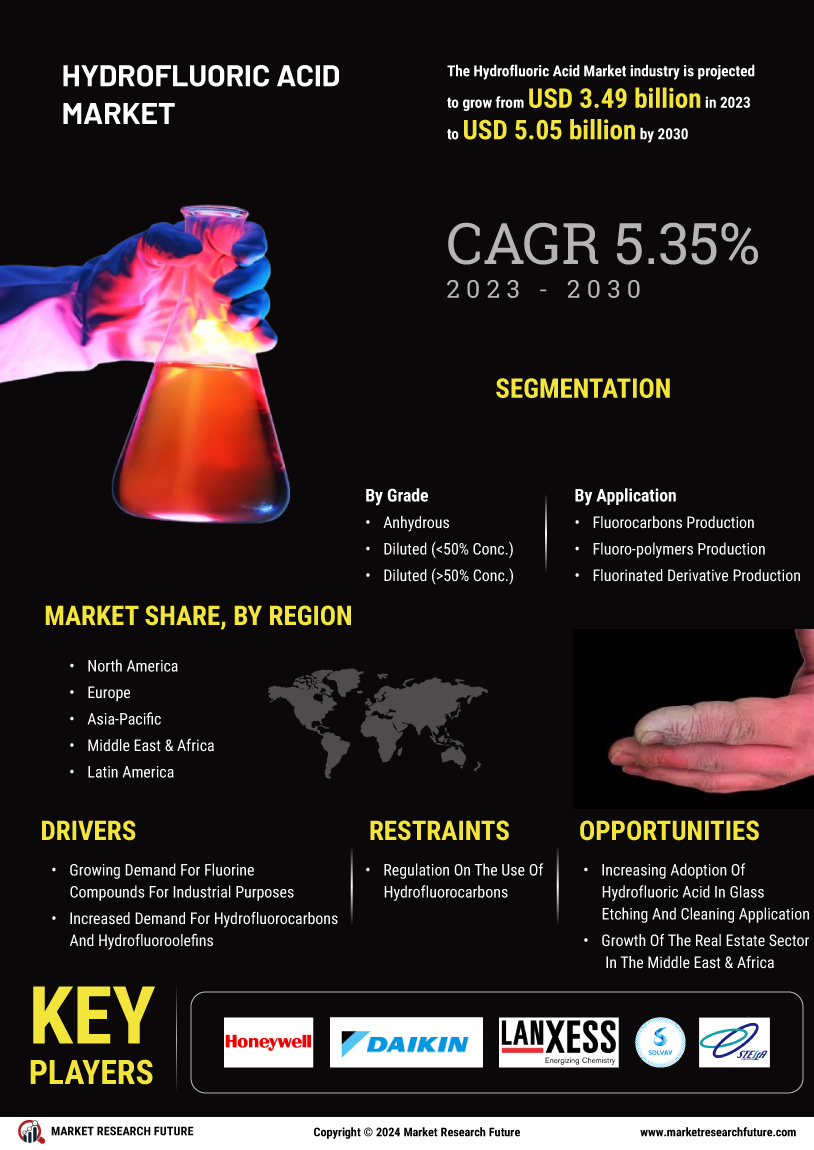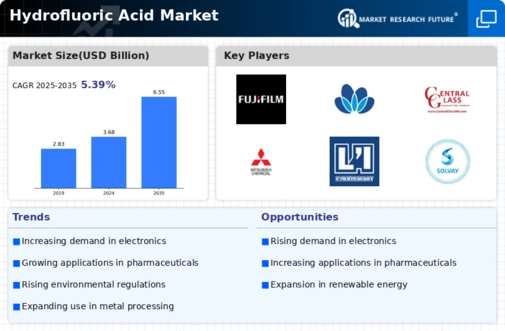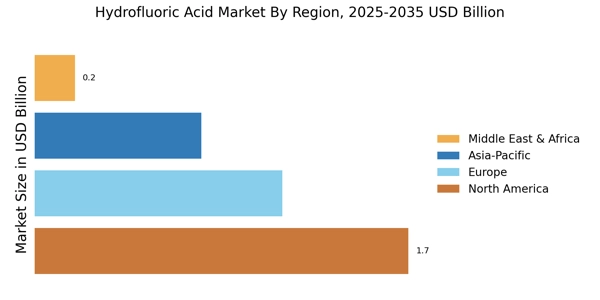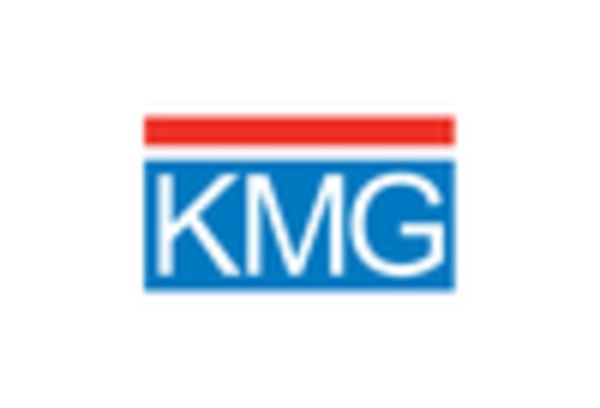Expansion of the Renewable Energy Sector
The expansion of the renewable energy sector is emerging as a key driver for the Hydrofluoric Acid Market. Hydrofluoric acid is essential in the production of photovoltaic cells used in solar panels, which are increasingly being adopted as a sustainable energy source. As governments and organizations prioritize renewable energy initiatives, the demand for solar energy solutions is expected to rise significantly. This shift towards renewable energy is likely to create new opportunities for hydrofluoric acid manufacturers, as the production of solar cells requires high-purity hydrofluoric acid. The renewable energy market is anticipated to grow at a CAGR of approximately 8% over the next decade, indicating a promising outlook for the Hydrofluoric Acid Market as it aligns with global sustainability goals.
Regulatory Framework and Safety Standards
The Hydrofluoric Acid Market is influenced by an evolving regulatory framework and stringent safety standards. Governments and regulatory bodies are increasingly focusing on the safe handling and transportation of hazardous materials, including hydrofluoric acid. Compliance with these regulations is essential for manufacturers to operate effectively and maintain market access. As a result, companies are investing in safety innovations and training programs to ensure adherence to these regulations. This focus on safety not only protects workers and the environment but also enhances the reputation of companies within the Hydrofluoric Acid Market. Furthermore, adherence to safety standards may lead to increased operational efficiencies and reduced liability risks, thereby fostering a more sustainable market environment.
Increasing Demand in the Chemical Industry
The Hydrofluoric Acid Market is experiencing a notable surge in demand, primarily driven by its extensive applications in the chemical sector. Hydrofluoric acid is a critical component in the production of fluorinated chemicals, which are essential for various industrial processes. The market for fluorinated chemicals is projected to grow at a compound annual growth rate (CAGR) of approximately 5% over the next few years, indicating a robust demand for hydrofluoric acid. Additionally, the increasing use of hydrofluoric acid in the synthesis of pharmaceuticals and agrochemicals further propels its market growth. As industries seek to enhance production efficiency and develop innovative products, the reliance on hydrofluoric acid is likely to intensify, thereby solidifying its position within the Hydrofluoric Acid Market.
Rising Demand from the Semiconductor Industry
The semiconductor industry is a significant driver of growth within the Hydrofluoric Acid Market. Hydrofluoric acid is utilized in the etching and cleaning processes of semiconductor manufacturing, making it indispensable for producing high-purity silicon wafers. As the demand for electronic devices continues to rise, the semiconductor sector is expected to expand, consequently increasing the need for hydrofluoric acid. Reports indicate that the semiconductor market is projected to grow at a CAGR of around 6% in the coming years, which suggests a corresponding rise in hydrofluoric acid consumption. This trend underscores the critical role that hydrofluoric acid plays in supporting technological advancements and innovation within the Hydrofluoric Acid Market.
Technological Advancements in Production Processes
Technological advancements are playing a pivotal role in shaping the Hydrofluoric Acid Market. Innovations in production processes, such as the development of more efficient and environmentally friendly methods for hydrofluoric acid synthesis, are emerging. These advancements not only enhance production efficiency but also reduce the environmental impact associated with hydrofluoric acid manufacturing. For instance, the implementation of closed-loop systems and improved safety protocols has been observed in several production facilities. As a result, manufacturers are likely to experience reduced operational costs and increased output, which could lead to a more competitive landscape within the Hydrofluoric Acid Market. Furthermore, these technological improvements may attract new entrants into the market, thereby expanding the overall industry.


















Leave a Comment